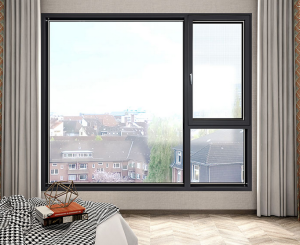In order to ensure that the project’s aluminum doors and windows meet the performance requirements of wind pressure, water tightness, air tightness, heat preservation, sound insulation, lighting, safety, etc., we will share with you the five key points of door and window quality control.
Aluminum doors and windows sealing requirements
1. Corner sealing strip (glue corner)
The sealing strip should avoid corner splicing, and the corner sealing strip should be designed as a 90-degree integral rubber angle.
2. Frame fan sealing strip
Three sealing strips should be designed for the opening of the fan, namely the main sealing strip, the fan edge strip and the frame edge strip.
Leak-proof requirements for aluminum doors and windows
1. Drainage channels are provided on the outer windows
A buckle cover should be installed on the outside of the drain to prevent strong wind from blowing rain and dust into the window sash.
2. The heat insulation strip should adopt C-shaped structure
The inner and outer aluminum profiles are composited on the same horizontal surface to avoid leakage and corrosion hazards caused by the accumulation of water at the heat insulation strip, and at the same time can increase the length of the heat insulation strip and improve the thermal performance.
3. Door and window opening size
The opening of the structure should not be too large to avoid the hidden danger of leakage caused by the difficulty of sealing.
4. Googling
For special reasons, such as the external wall is a stone curtain wall, the opening of the opening has a large reserved size. It is recommended that the structural opening be grooved, and the groove should be poured at the same time as the concrete wall.
5. Outer window sill
For buildings whose exterior wall materials are paint, metal window sills are recommended. The inner side of the metal window sill should be pressed into the window frame, and the outer side should be dripping from the wall.
6. Window frames and structural openings
The window frame should be installed in a vertical position. If it is installed on the outside, it should be retracted 20mm inward to prevent structural construction errors from causing the window frame to be installed outside the structure outer skin, causing rainwater leakage.
Aluminum door and window frame fan structure requirements
1. Group angle
Group angle is an important process related to the integrity of doors and windows.
2. Glue process
Under normal circumstances, the corner code + wipe group corner glue process should be used, and the window corners are not allowed to be extruded without glue.
3. Glue injection process
The corners can also adopt the corner code + glue guide groove + glue injection hole + two-component glue injection + corner piece process to ensure the corner strength requirements and ensure that the finished doors and windows are not deformed and displaced after transportation and installation.




